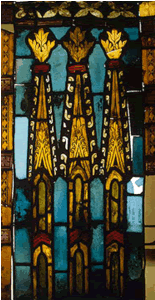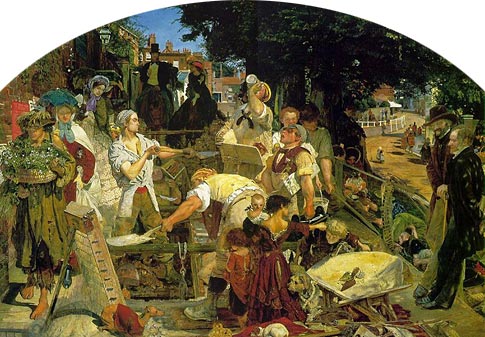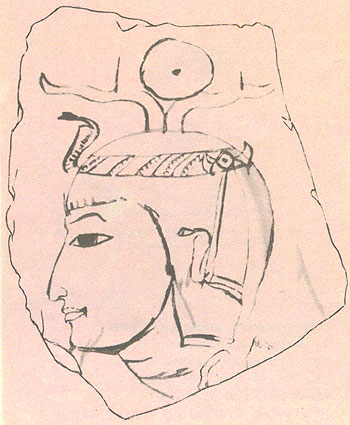Egyptian ostracon drawings
 In the art of ancient Egypt, there are monuments that make up a special group. These are works of graphics – drawings on boards. The Greek word “ostracon” literally means a shard, a fragment of ceramics. However, in relation to the art of ancient Egypt, it has a more capacious meaning. This word is commonly understood as drawings made not only on fragments of ceramics, but mostly on chipped stone (usually limestone), less often wood, that is, on material that was always at hand with masters engaged in decorating the tombs of the Theban necropolis — painting walls , manufacturing of statues and items of funeral inventory.
In the art of ancient Egypt, there are monuments that make up a special group. These are works of graphics – drawings on boards. The Greek word “ostracon” literally means a shard, a fragment of ceramics. However, in relation to the art of ancient Egypt, it has a more capacious meaning. This word is commonly understood as drawings made not only on fragments of ceramics, but mostly on chipped stone (usually limestone), less often wood, that is, on material that was always at hand with masters engaged in decorating the tombs of the Theban necropolis — painting walls , manufacturing of statues and items of funeral inventory.
Most of the ostracons were found in the excavations of the Deir el Medina settlement, where the craftsmen who served the royal necropolis in the Valley of the Kings lived. It was located on the west bank of the Nile opposite the capital Thebes. The Ostrakons found here belong to the end of the New Kingdom (1314–1085 BC), to the XIX – XX dynasties.
Even in ancient times, about IV millennium BC. e., in ancient Egypt, there was a whole system of ideas about the afterlife. The requiem cult found expression in the care of the dead, which, according to the beliefs of the Egyptians, continued to exist in the afterlife. The tomb served as the habitat of the deceased, and therefore its design was given great importance. Tombs and chapels in the temples brightly painted.
The murals of the tombs of kings and court nobles resembled a papyrus scroll unfolded, on which magical texts were written, designed to provide the deceased with eternal life in the afterlife. Such texts illustrated drawings with canonized scenes.
In addition to traditional motifs, in the era of the new kingdom appear less common. In the reliefs of the temple of Amon in Karnak one can see the full dynamics and expression of “Acrobatic dance” and a peculiar landscape in the so-called “Botanical relief”. Landscape motifs are also found in wall paintings and drawings on islands, the compositions of which abounded in new image techniques: trees with a lush, spreading crown became more picturesque, the outlines of the branches and the trunk were either completely devoid of a conventional stroke, or it was done very thinly. The coloring becomes more refined, the colors – more saturated. In landscape ostracons, date palms with monkeys on the branches often appear. Such plots allow us to talk about strengthening contacts with Nubia in the era of the New Kingdom, since the Egyptians associated monkeys and date palms with this country.
Egyptian masters used natural dyes. The color palette of pictures on ostracons is more restrained in comparison with paintings. Most of them are made of brick-red or black paint, or in the traditional range of four colors: black (gray), ocher red, orange, yellow, brown, green (mostly light) and sometimes white. Blue paint was used less frequently.
The Egyptian master, as a rule, subordinated the variety of natural colorful combinations to the established color scale, using the coloring technique. Artists compared colors, adhering to the principle of decorative contrast. They avoided gradation of shades, this could give the composition spatial illusiveness. What the masters saw in reality, they were able to organically transform images into a conditional manner.
Already at an early stage of development of ancient Egyptian art in reliefs and paintings, the motif of a rook with a figure of a seated or standing oarsman, floating among thickets of papyrus and lotus, is becoming popular. This plot, associated with the idea of the death of the deceased after death, wore a ritual character. The stalks of papyrus served as the border between the world of the earth and the otherworldly, and the lotus flowers symbolized the rebirth to eternal life. The image of the rower corresponds to the accepted rules for transferring a figure on a plane with a combination of front and profile elements.
A true masterpiece is the ostracon with the image of an acrobatic dance. In a rush of movement, the flexible acrobat swung back. The moving grace of the figure is emphasized by the falling wig strands. An interesting detail: the earring in the ear, not obeying the movement of the figure, remains to hang motionless.
This kind of convention can be very often observed in ancient Egyptian art, since the artist never sacrifices authenticity for the purity of the silhouette lines.
There are sketches among the ostracons, which, although with reservations, can be attributed to genre compositions. The basis of their direct observations. Such sketches are executed in a fluent, free manner. On a small earthenware shard a picture of a naked girl was preserved.



